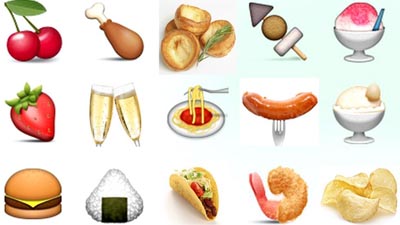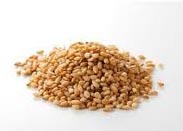
I have been having an interesting exchange over the last ten days with one of our long-time subscribers who sent me a link to a document on the UTC (Unicode Technical Committee) site.
(The UTC, for those do not know, ‘is responsible for the development and maintenance of the Unicode Standard, including the Unicode Character Database, as well as Unicode Technical Reports and Unicode Technical Standards.’ And if you are no wiser, as I wasn’t, the ‘Unicode Standard is a character coding system designed to support the worldwide interchange, processing, and display of the written texts of the diverse languages and technical disciplines of the modern world. In addition, it supports classical and historical texts of many written languages…..’ including emojis! I am sure this information will be invaluable to Trivial Pursuit addicts.)
Anyhow…… The reason for the exchange was that a proposal was submitted to the UTC proposing the encoding into Unicode of emoji characters to represent food allergens – here is the document to which Mr Overington sent me. In fact, the committee decided against the idea because there were ‘principled problems with trying to deal with allergens as a set of emoji’ but it did, once again, raise the issue of pictograms versus words when dealing with allergens.
There are, of course, many plus-es to using pictograms – not the least being overcoming the language barrier when travelling. One of the main reasons people with food allergies and intolerances rarely travel abroad is that they fear they will not be able to communicate with food providers in a different and language so that the likelihood of disastrous mistakes is massively increased. And, there is no doubt that pictures do speak louder than words. It is much quicker and easier just to take note of an image than to plough through an ingredients list.
However…….
The first problem is, as is so often the case with symbols, creating uniformity – a common set ofpictures that everyone accepts, understands and uses. To be really helpful this would need to imposed worldwide and what chance of that?
 And that is always assuming that there is a picture which is obviously recognisable as the food in question. A banana is always, obviously, a banana, an egg is always an egg – but what about mustard or sesame seeds? These are sesame seeds but they could be almost anything – barley? pine nuts? brown rice?
And that is always assuming that there is a picture which is obviously recognisable as the food in question. A banana is always, obviously, a banana, an egg is always an egg – but what about mustard or sesame seeds? These are sesame seeds but they could be almost anything – barley? pine nuts? brown rice?
And how do you represent soya? Most people in the west only know soya as a milk – they certainly would not recognise this as a soya bean – they would think it was a green pea or a bean. And if you do use the soya bean in its pod, then what do you do about beans or peas? Legumes as an allergen are rapidly moving up the rankings!
And then…
Does an image of a food allergen on a packet mean that it contains it – or that it does not contain it? Or an image of an allergen with a line through it mean that that allergen is not in that food – or that that food is barred to people who react to that allergen? In each case you really needs words to explain. Which is why, I think sensibly, the Brussels boffins settled on highlighted words, in whatever the local language might be, to indicate the presence of one of the 14 major allergens in their new Food Information for Consumers regulations. At least, if travelling in Europe, if an ingredient is in bold/underlined/in italics, whatever the language, you know that it is an allergen. So then all you have to do is to look it up on the dictionary, which I certainly hope that you would be carrying on your phone if not in your hand, and discover what it is in your own language.
So, I am not entirely sure what the ‘principled problems’ the good committee of the UTC may have had the with proposed allergen emojis – but I am glad they threw them out.
(To be absolutely honest, I would be very happy if all emoji(s) were to be banned on pain of death – but that is a different issue….)


